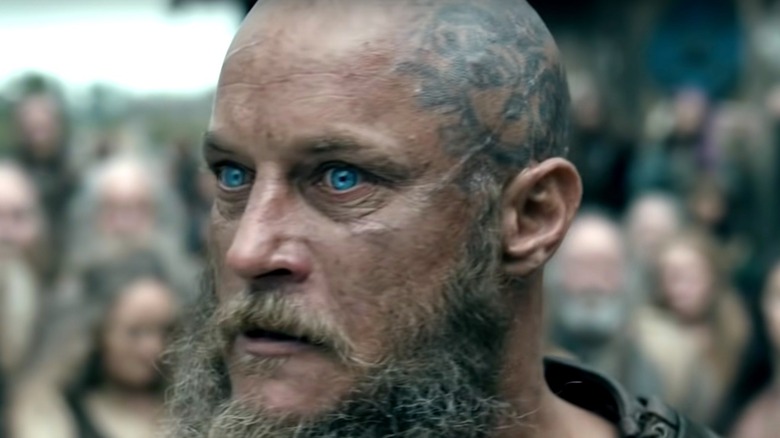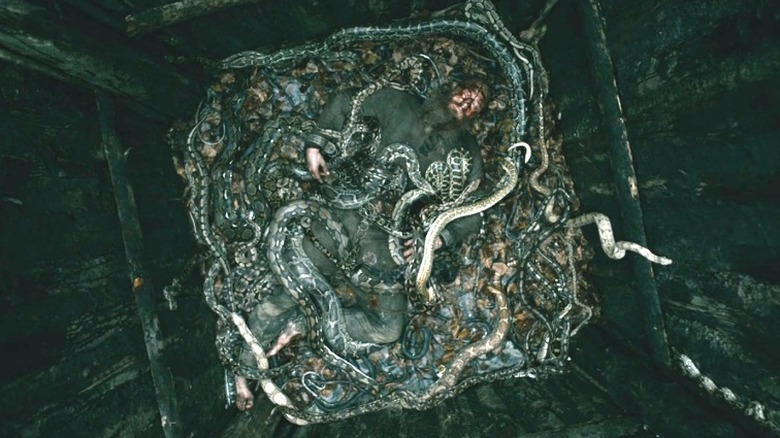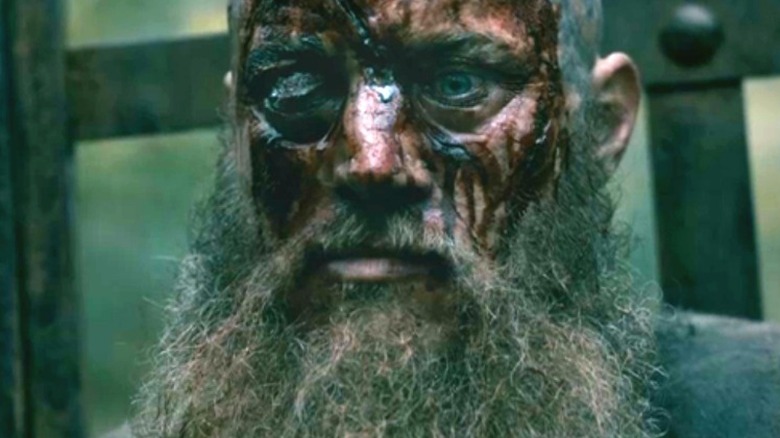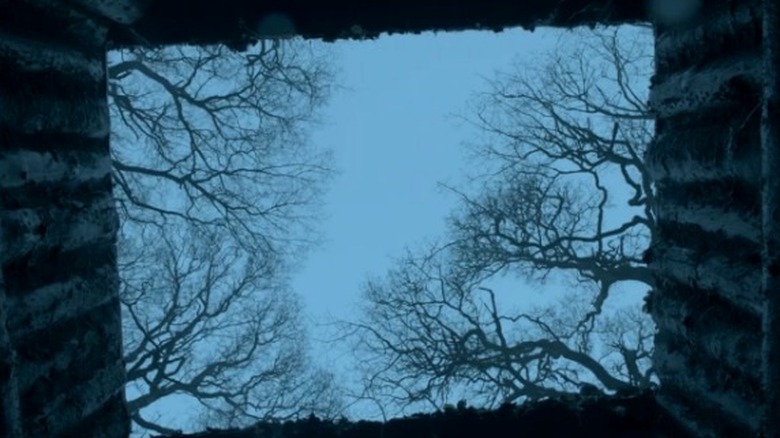The Ragnar Theory That Would Change Everything On Vikings
Both during and following its Viking fad-initiating, six-season reign on the History Channel, Michael Hirst's "Vikings" inspired a number of fan theories and discussions. Whether they were debating the true identity of Floki (Gustaf Skarsgård), wondering about which son Ragnar loved the most, or attempting to predict the series' next moves, fans were and occasionally still are eager to dissect some of the show's most mysterious turns and allusions.
The enthusiastic response to the series is hardly surprising, particularly given the many risks it took in the course of telling its epic tale. How many other shows, for instance, would take the unprecedented step of murdering their main character well before the series' conclusion? In a narrative comprised of multiple protagonists (e.g., "Game of Thrones"), such daring darling kills, while compelling, are hardly shocking. But that's the exact word Entertainment Weekly used to describe Hirst's decision to do away with Travis Fimmel's Ragnar Lothbrok partway through Season 4.
In Episode 15 ("All His Angels") a long-spiraling Ragnar gets in over his head in England and is finally captured by Ivan Kaye's King Aelle. Rather than simply behead or hang his long-time foe, Aelle decides to channel his inner Bond villain, get a little creative, and put the village's venomous snakepit to good use. The episode ends with Ragnar being dropped in the pit, and promptly consumed by a pile of writhing snakes.
Or ... does it?
Fans think Ragnar still lives
According to some fans on the "Vikings" subreddit, there's evidence to suggest Ragnar not only survived the snake-pit but planned the whole event. This theory continually pops up despite how both Hirst and Fimmel, in a 2016 interview with The Hollywood Reporter, confirmed that the character is, in fact, quite dead. Still, the idea that a popular series would actually kill off its central protagonist with two-and-a-half more seasons to go left certain people skeptical, especially since Ragnar faked his death once before in the "Vikings" Season 3 finale).
As u/Chuckwagoncook wrote, "Ragnar is in it for the long con. A long dangerous con. He even somewhat mentioned this while he was locked in the cage at King [Ecbert's] dinner table." In a separate thread, a fan pointed to the oft-mentioned scene in Season 4, Episode 18 ("Revenge") where Ragnar's sons stare down into an empty pit. "The snakes were too small to swallow him whole and digest his body," the user writes, concluding that "it would still be there if he were dead." It's not a totally absurd theory. In just about every other television show ever, if a "dead" character's body is never shown nor found, you can bet that character will reappear in a later season.
So how likely is it that Ragnar survived? Let's set aside this Reddit thread's debate about the science of decomposition (since there's just no world in which "Vikings" expects or wants us to apply such things) and talk about Ragnar's pants instead.
Snakes: 1, Ragnar: 0
The protagonist's last name, Lothbrok, translates loosely to "shaggy" or "hairy" breeches. In Ragnar's saga, he commissions his formidable, wearable epithet in order to protect himself in an upcoming battle with a dragon, a definitive fashion scene that plays out thusly, per Jackson Crawford's book "The Saga of the Volsungs with The Saga of Ragnar Lothbrok." As stated on page 89, "[Ragnar] ordered some clothes made for himself of a strange type, shaggy pants and a shaggy cloak, and when they were done, he ordered them boiled in pitch." Incidentally, the dragon of the saga (whom he succeeds in slaying) is an overgrown pet snake. If Ragnar's pants successfully protected him from a giant-sized snake dragon, wouldn't they also protect him from a pit of regular old snakes?
No.
Ragnar's characteristic slacks (which, oddly enough, aren't actually mentioned in Hirst's series) were never intended to shield him from snake bites. "A splash of the dragon's blood hit him," the 90th page of the saga reads, "but it did not harm him because the clothes he had made protected him." The snakes in Aella's pit aren't splashing Ragnar with poisonous blood — they're repeatedly biting him, all over his body, with venom-filled fangs. In the scene, we see his body twitch and convulse in response to the bites, and watch as they eventually overwhelm him. He sure seems pretty dead by the end of it all, but if there were any lingering doubts, Hirst's use of several other elements of the saga provides a clear answer.
Ragnar does live ...sort of
In his detailed breakdown of the making of the sagas, Jackson Crawford references a shorter, contemporary version of the 13th-century narrative titled "Ragnarsonna tháttr," wherein, as he writes on page IX, "a skaldic poem composed in the 1100s in the Hebrides called Krákumál is put in the mouth of Ragnar as he dies in the snake-pit." Not only does Ragnar's on-camera death mimic his saga death, but his final speech (via YouTube) is a direct reference to the 12th-century poem, which reads, "I desire my death now // The disir [Æsir] call me home//...Laughing I shall die!"
It seems unlikely Hirst would include such an overt reference to his hero's (absolute) death in the original saga only to veer from the epic's conclusion by having Ragnar magically spring back to life later on. And yet, there's still the issue of that empty pit. But the fans' desire for a living Ragnar notwithstanding, this, too, can be explained by looking to the saga, and the contemporary Norse beliefs Hirst continually weaves into his series. "I think the point was to show that Ragnar had been taken to Valhalla by Valkyries," u/Battletyphoon theorized in the aforementioned Reddit thread, a point fully supported by the series' depiction of its protagonist's demise.
"The Aesir will welcome me," Ragnar tells a crowd of onlookers before his death, adding "I welcome the valkyries to summon me home."
And so, it seems, they do.



